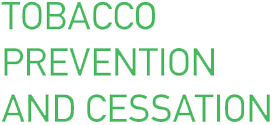Home
Issues
Aim & Scope
Editorial Board
Open Access
Indexing
Why publish with us
Contact us
Instructions to Authors (PDF)
Manuscript Types
Manuscript Formatting
How to submit
Special publications & Reprints
Preprints
Authorship & COI
Principles of Transparency Checklist
Publication Ethics and Publication Malpractice Statement
CrossMark
Data Policies
Supporting Diversity
CONFERENCE PROCEEDING
Highlighting the environmental impact of tobacco: WHO FCTC Secretariat partnerships, campaigns and resources
1
Worls Health Organization, FCTC Secretariat, Geneva, Switzerland
2
Environmental Technology Department, Centre of Environmental Policy, Faculty of Natural Sciences, Imperial College London, London, United Kingdom
3
Action on Smoking and Health (ASH), Washington, United States
4
Belgian Alliance for Smoke Free Society, Brussels, Belgium
5
Alliance contre le tabac (ACT), Paris, France
6
Nofumadores.org, Madrid, Spain
7
Framework Convention on Tobacco Control Secretariat, World Health Organization, Geneva, Switzerland
Publication date: 2022-07-05
Tob. Prev. Cessation 2022;8(Supplement):A2
ABSTRACT
This year’s theme for World No Tobacco Day is ‘Tobacco: a threat
to the environment’ with a focus on the immense environmental
damage caused by tobacco cultivation, production, distribution,
consumption and waste, such as cigarette butts and electronic
waste. Globally, more than six trillion cigarettes are produced
annually, each containing filters, or butts, that are mainly
composed of microplastics known as cellulose acetate fibers.
Tobacco product waste (TPW) such as cigarette butts are the
most common pollutants globally and pose a significant threat to
human health and ecosystems due to the release of microplastics
and hazardous chemicals. An estimated 0.77 million metric tons
of cigarette butts are deposited annually into the environment.
Tobacco’s total environmental footprint is comparable to that of
entire countries and its production is often more environmentally
damaging than that of essential commodities such as food crops.
For the six trillion cigarettes manufactured annually, 32.4 Mt
of green tobacco are cultivated on 4 million ha of arable land
and are then processed into 6.48 Mt of dry tobacco worldwide.
Globally, the tobacco supply chain contributes almost 84 Mt
CO2 eq emissions to climate change, 0.49 million tons of 1,4-DB
eq to ecosystem ecotoxicity levels, over 22 billion m3 to water
and 21 Mt oil eq to fossil fuel depletion annually. Additional
pollution from novel products including e-cigarettes and vapes
will increase the amount of electronic waste in cities and
communities and lead to higher clean-up costs. To mitigate and
reduce the amount of tobacco product waste, tobacco producers
should ultimately be responsible under Extended Producer
Responsibility (EPR) for liability, economic costs, and providing
information on environmental impacts of tobacco use. The WHO
Framework Convention on Tobacco Control (WHO FCTC) has
182 Parties and is the first public health treaty negotiated under
the auspices of the World Health Organization. Article 18 of the
WHO FCTC addresses the need for due regard to the protection
of the environment and the health of persons in relation to the
environment in respect of tobacco cultivation and manufacture
whilst Article 19 on liability touches on holding the tobacco
industry liable for its abuses. This session, proposed by the WHO
FCTC Secretariat, aims at presenting to delegates the serious
impact of tobacco value chain on our environment, providing
them with information to build a case for advocacy initiatives, and
sharing success stories at regional and national levels.
CITATIONS (1):
1.
Estilos de vida, sostenibilidad y salud planetaria
Ronda Egea, Campo del
Revista Clínica de Medicina de Familia
Ronda Egea, Campo del
Revista Clínica de Medicina de Familia
We process personal data collected when visiting the website. The function of obtaining information about users and their behavior is carried out by voluntarily entered information in forms and saving cookies in end devices. Data, including cookies, are used to provide services, improve the user experience and to analyze the traffic in accordance with the Privacy policy. Data are also collected and processed by Google Analytics tool (more).
You can change cookies settings in your browser. Restricted use of cookies in the browser configuration may affect some functionalities of the website.
You can change cookies settings in your browser. Restricted use of cookies in the browser configuration may affect some functionalities of the website.

